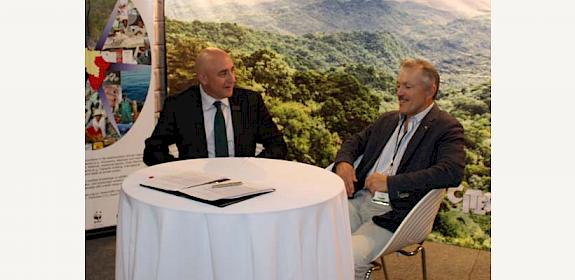New training suite will help protect vulnerable plant species from overharvesting, inline with CITES Non-Detriment Findings guidance
Next week, CITES1 will hold the 25th meeting of the Plants Committee. Today, TRAFFIC and the German Federal Agency for Nature Conservation (Bundesamt für Naturschutz, BfN) launch a website and eLearning platform dedicated to Non-detriment findings (NDF) guidance for perennial plants and timber.
Ensuring trade is within sustainable limits is at the core of CITES. The trade of Appendix II-listed species is only allowed if the Scientific Authority of the State has advised that “such export will not be detrimental to the survival of that species” (Article IV). These NDFs are a critical step to ensure the export of any specimen will not negatively impact the survival of that species. Although there is a general agreement that NDFs should consider species biology, species range, population structure, status and trends, conservation status and threats, harvest patterns, management measures, and population monitoring there are no rules as to how these must be made.
Parties, IGOs, and the CITES Secretariat have made considerable efforts to develop general and taxon-specific guidance for undertaking NDFs including through the hugely successful First International Expert Workshop on CITES Non-Detriment Findings held in Cancun in 2008.
Collaboration between TRAFFIC and BfN to create and refine guidance for perennial plants began in 2012 and built on discussions during the Cancun meeting. Over the past decade of collaboration, two guidances have been developed on Perennial Plants and Timber based on a step-by-step process. These 9-Step guidance documents have been revised and improved through expert input and feedback from training workshops in a number of countries including Vietnam, Peru, China, Georgia, Gabon, and Mozambique.
Although physical training workshops are a fantastic opportunity to go and interact with colleagues from around the world, development of online training seemed to be a necessity to address the growing demand for training. These online courses enable any Scientific Authority to learn how to apply the 9-Step approach if they wish to.”
Thomasina Oldfield, TRAFFIC Director of Programmes and Research
The courses are now available through a dedicated website.
The website also incorporates a new online decision tree in conjunction with the guidance for recording NDF information. This can be used with the case studies integrated into the courses or for real-life NDF reports.
“The guidances are the result of intensive discussion and interaction with many a CITES party around the world. Like these discussions, the guidances are a prime example that demonstrate the spirit of the Convention. It has been a pleasure to work so collaboratively and constructively with friends and experts from Parties, the CITES Secretariat and TRAFFIC over the past decade”, says Dr Daniel Wolf, from BfN’s Botanical Species Conservation department.
This work has been possible through funding from BfN with money from the German Environment Ministry. Additional funding for workshops and translations came from the German cooperation with ACTO through KfW and the CITES Program on Tree Species.
Notes:
1 the Convention on International Trade in Endangered Species of Wild Fauna and Flora




